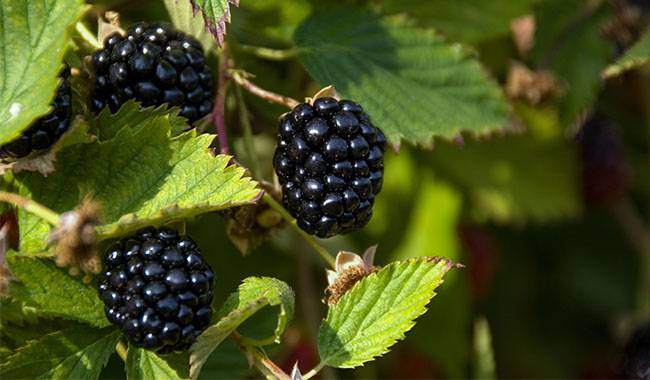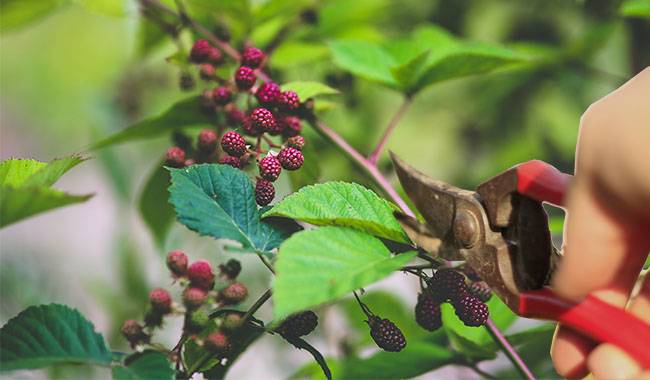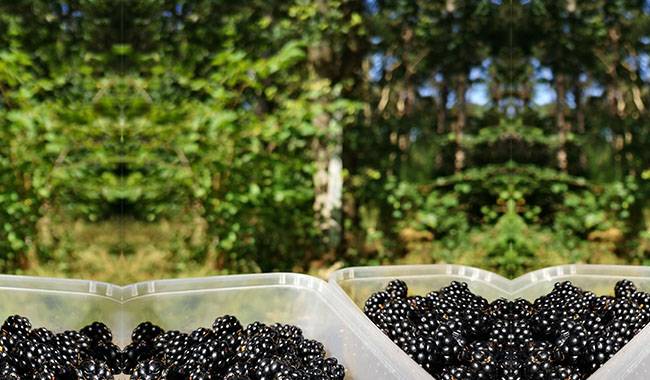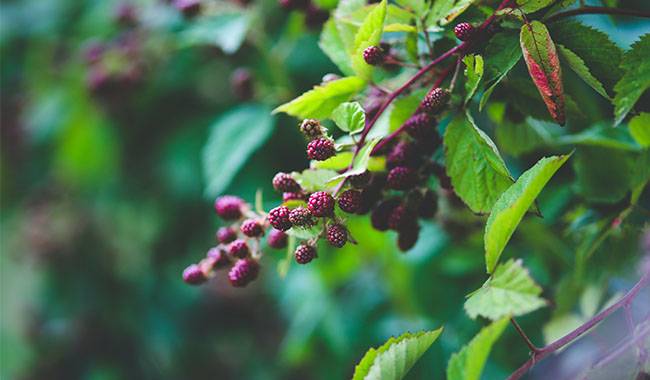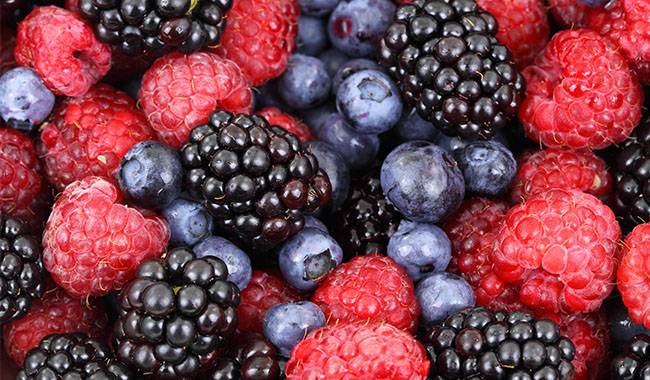
Blackberry is a plant with the same medicine and food. It is a perennial vine of Rubus Rosaceae origin in North America. Since ancient Greece more than two thousand years ago, the local people have formed the custom of eating wild thorny blackberries. It is popular in recent years. The representative variety of the third generation of fruits in the world.
The third-generation new special fruit is recognized by the United Nations Food and Agriculture Organization. Because of the many benefits of blackberry, it has also been praised as “fruit of life” and “black diamond” by European and American countries.
Blackberries are extremely difficult to store. They must be cleaned, sterilized, and frozen within 4 hours after picking. Otherwise, a large amount of nutrients will be lost and fermentation will deteriorate. Countries where blackberries are grown are mainly processed into frozen fruits for export. Therefore, blackberries are the only most difficult to be on the market.
Appearance characteristics — benefits of blackberry
The blackberry tree is a widely distributed and well-known shrub; it is a raspberry plant, usually two-year-old, with upright stems, semi-upright or climbing stems, thorns, and some cultivated species without thorns.
It can grow up to 3 meters high and produce soft fruits-often used as desserts, jams, seedless jellies, and sometimes used to make fruit wines.
The leaves are three or palmate compound leaves, with three to five small leaves, wide, elliptical, stalked, and the leaf margins are coarsely divided. Most of the leaves persist through the winter.
The flowers are white or pink, and the fruit is aggregated. The small black or red-purple drupes are born on the succulent torus.
Region of origin — benefits of blackberry
It is native to the northern temperate zone of the old and new continents and is particularly abundant in eastern North America and the Pacific coast. It is common in the British Isles and Western Europe as sprouting forests and hedge plants.
In some parts of the earth, such as New Zealand and the Pacific Northwest of the United States, blackberries have been naturalized and are regarded as an invasive species and troublesome weed.
Blackberry cultivation has a long history. Starting from ancient Greece, locals have established a custom of collecting wild thorny blackberries for consumption. By the middle of the 17th century, Europeans began to domesticate and optimize wild varieties.
Later, in the 19th century, it was introduced to the Pacific continents by the United States. According to incomplete statistics, 30,000 hectares are planted in the United States and 20,000 hectares in Chile.
In the development of fruit trees in the world, the development speed of small fruits is about three times that of other fruit trees, and they are called “emerging small fruits”.
The main reason is that the fresh fruits and their products are rich in nutrition, most of which are bright in color, mellow in flavor, and have a unique pleasant fragrance, many of which also have some unique nutritional functions.
Growth habits — benefits of blackberry
Blackberry has extremely high requirements for the planting of land and the environment. The soil moisture and fertility should be moderate. The growth has a creeping habit. The arched stem has short, curved but sharp spines.
When the bent and drooping branches touch the ground, roots will grow from the nodes at the top of the branches. Due to this characteristic, coupled with the rapid growth of blackberries, blackberries that grow in woodland, bushes, and hillsides, can spread out and occupy a large area of land in a short period of time.
In the early stage of the blackberry, the flower can produce more small drupes than in the later stage. This symptom shows several possibilities: root exhaustion, extremely reluctant number of pollinators, or small changes in environmental conditions, such as rainy days or too much weather. Heat makes it impossible for bees to work after early morning, resulting in fewer visits by bees or fewer pollen grains to the flowers, and finally lower fruit quality.
Small drupes develop only near the ovule; the male gametes from the pollen grain fertilize the ovule. The fruit ripening time is mainly more than a month from the end of June to the beginning of August and must be picked manually, which is a labor-intensive industry.
TOP 4 Benefits of blackberry
1. Relieve indigestion
Blackberry is a special fruit that can promote digestion. This fruit is rich in acidic components, especially malic acid, fatty acids, and tannic acid. These acidic components are absorbed by the body and can promote body fat. The digestion of protein and starch can speed up the body’s absorption and utilization of them, which can effectively relieve human indigestion.
2. Treat early white hair
Blackberries can also treat human hair and beard early because this purple-black fruit contains a large amount of natural shows fascin, which can make people’s hair black and shiny, and it can also make people’s white hair black. Early whitening of human beard and hair has a significant relief effect.
3. Prevent arteriosclerosis
Blackberries contain a lot of resveratrol, some phenolic substances, and linoleic acid, linolenic acid, these substances are natural antioxidants, which can reduce the oxidation reaction of low-density protein in the human body, and can also soften blood vessels and increase platelets. Active, it has an obvious preventive effect on the high incidence of human arteriosclerosis and stroke.
4. Prevent cancer
Blackberries contain a variety of natural anti-cancer ingredients. Among them, resveratrol and rutin are high in content. These substances can not only inhibit the canceration of human tissue cells but also reduce cell regeneration. People can prevent cancer after eating. , It can also inhibit the deterioration of cancer. In addition, eating more blackberries can prevent cerebral hemorrhage and reduce the occurrence of common diseases such as retinal hemorrhage and high blood pressure.




